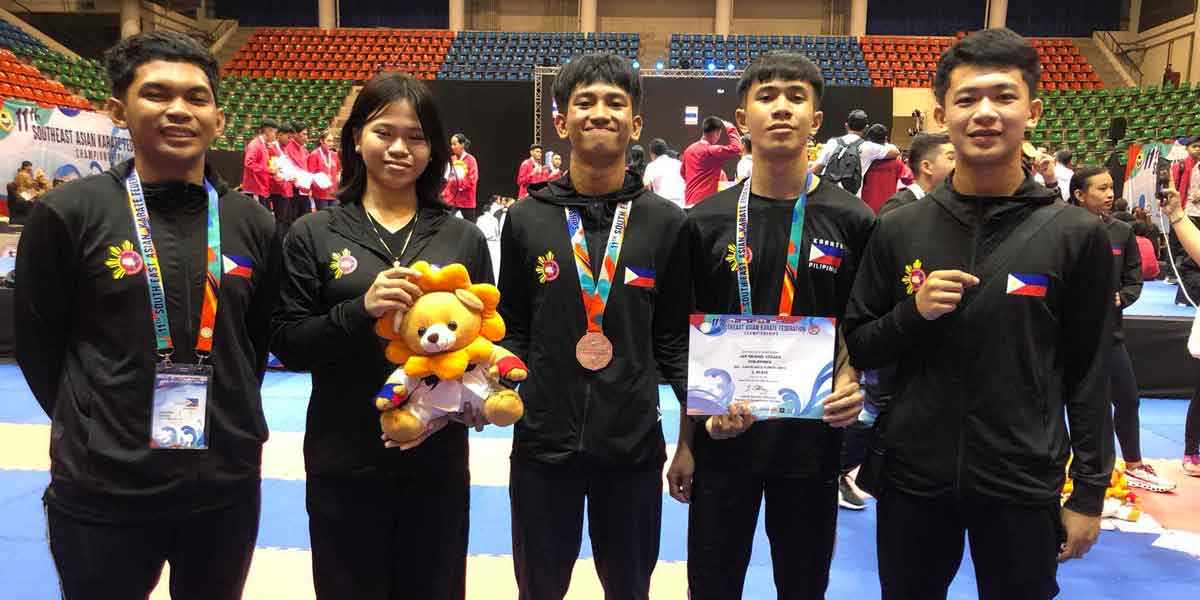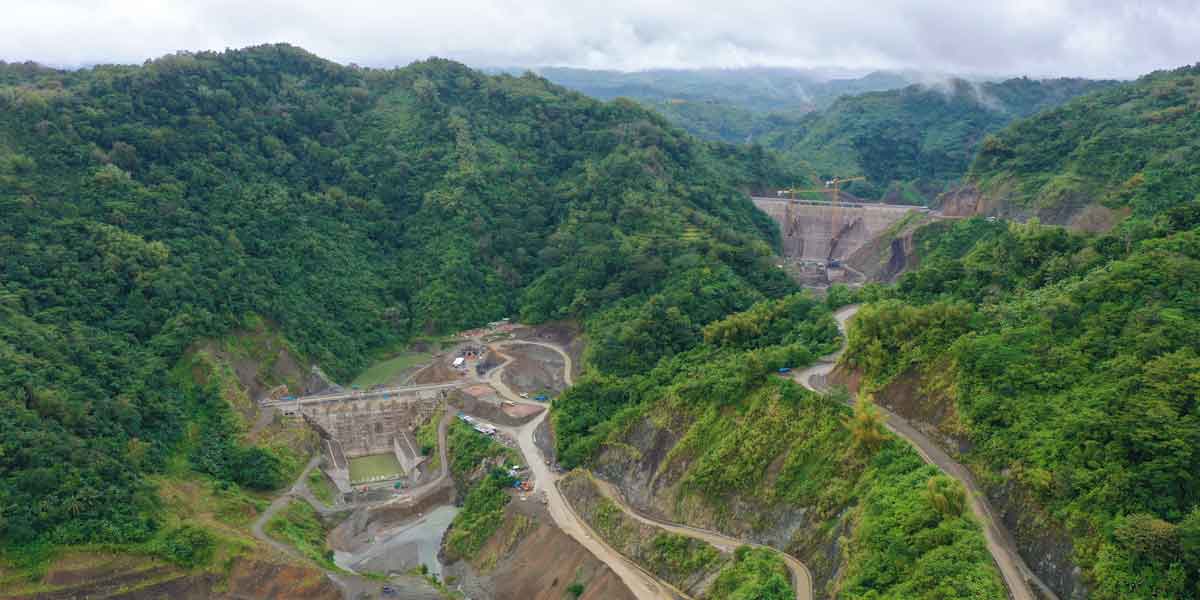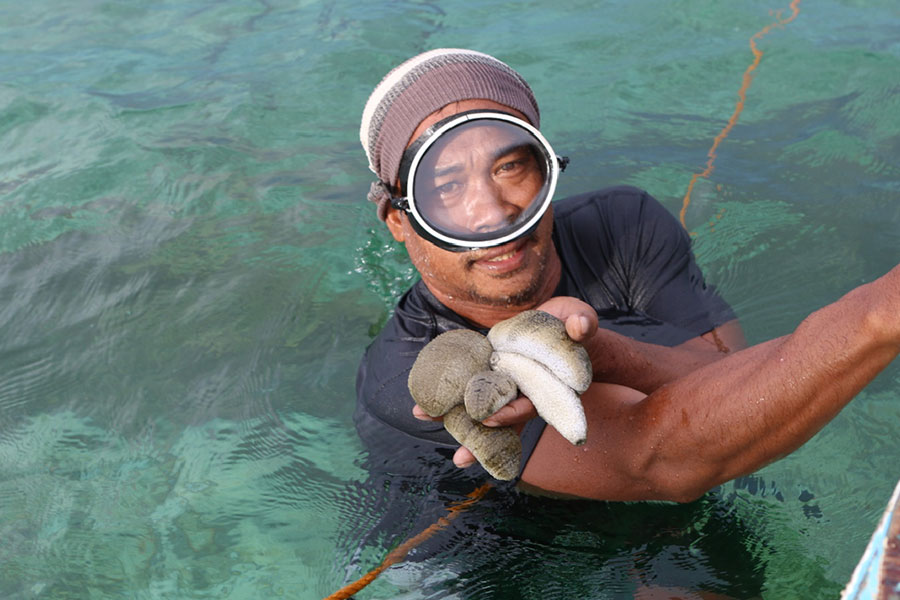
By Juliana Rose Pagador and Rex Delsar Dianala
Just off Molocaboc Island, beneath a turquoise canopy of water, fishers search the coral reef to pick out abalone and sea cucumber, two prized delicacies in Asian cuisine. Live abalone sells abroad for up to USD120 or approximately PHP5,700 a kilo, and dried sea cucumber, USD2000 or about PHP96,000 a kilo.
But the fishers are not here to cash in on the abalone grazing on coralline substrates and the sea cucumber burrowing in the white sand. Not yet. They carefully weigh and size them, log the numbers in a notebook, and return them to the reef to continue to grow and reproduce.
During the formative years of the sea ranching project, the fisherfolks asked when they will benefit from the rehabilitation of the overfished abalone, sea cucumber, and seahorse population. Answering their questions was Dr. Nerissa Salayo, a socioeconomist of the Southeast Asian Fisheries Development Center Aquaculture Department (SEAFDEC/AQD). “It will likely take longer than we would expect, it could be beyond our lifetime, but for sure, if we succeed, we will leave a legacy to the fisherfolk of the future generations,” she said.
Some fisherfolk got serious, but with a smile, they said, “So we’re dead already, but our children will benefit.” Over a decade since the conversation with Salayo, they have abandoned destructive fishing practices and adopted a sea-ranching approach.
Salayo looks back at the people’s cooperation and participation and credits them for the present success of the sea ranching project at Molocaboc Island, 20 minutes by boat from the Sagay City Port north of Negros Island.
It was since 2006 when the Molocaboc fishers and the Sagay City local government have been working with SEAFDEC/AQD whose staff guided them in the Community-Based Resource Enhancement Project. After years of social preparation and assessments, hatchery-bred juveniles of abalone, sea cucumber, and seahorses were periodically released in a no-catch zone, starting in 2011. Since then, the fishers have been protecting and monitoring the stocks.
Abalone, sea cucumber, and seahorses flourished and, except for seahorses which are banned from the trade, gleaners started gathering just outside the protected site. Over the years, they reported catching a bit more which supplemented their subsistence income. In 2017, the fishers of Molocaboc began shipping live abalone to top hotels in Manila, while local traders supplied exporters in Cebu.
To ensure sustainability, gleaners only harvest abalone with shells at least 6 centimeters long, thanks to a Sagay City regulation initiated by the project. Sea cucumbers are also protected by nationwide harvest-size and trade regulations.
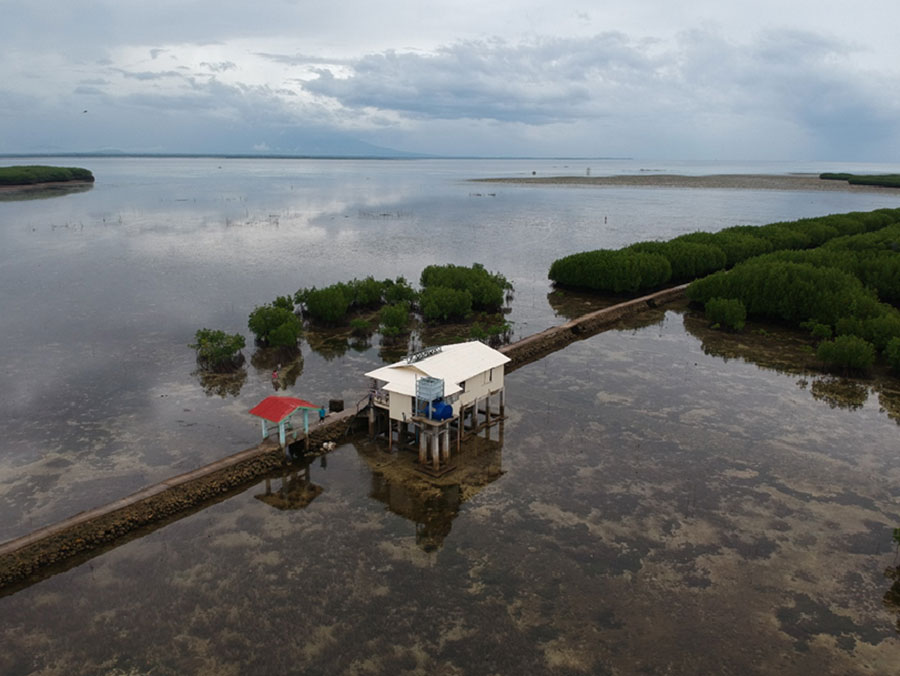
Role of fisherfolk leaders and barangay officials
Convincing the community to be involved in the project was the first hurdle, but one that was soon resolved.
Salayo dearly recalls Mariano Abog Jarina, an elderly fisherfolk leader who bolstered interest and support for the project from the very start. With most of his life dedicated to fishing, Jarina, fondly nicknamed “Tatay Marianing,” has a reputation in the community for his steadfast principles and sincere dedication to his work. A father of seven children, he was the breadwinner of his growing family until he stopped going out to sea in 2005 because of his declining health.
“Tay Marianing is one of several personalities, together with the officials of Barangay Molocaboc, who made things easier for me when organizing people,” emphasized Salayo. “He would personally approach people in their homes to encourage them to participate in discussions and lectures, especially during the early stages of the project.”
“Together with his co-senior buddies, he is hands-on during sampling, overseeing, and guiding fellow fisherfolks on tasks. Like my father, I would seek his advise if there are problems in the field. The Jarina family also opened their home and treated us like we were a part of the family, whenever our team had to stay for a few days and nights,” said Salayo as she recalled the challenge of monitoring the released stocks, especially the nocturnal abalone.”
In 2009, the Barangay Molocaboc Fisheries and Aquatic Resources Management Council (BFARMC), was organized. Jarina would serve as one of its presidents, in succession with other officers Carlos Batayola Jr, Jeoffrey Seronda, Terso Cordova, Francisco Bascar and Rafael Muñez. He continued as advisor of the organization until he passed away last 4 October 2020 at the age of 72. Until his last moment, he was saying that MOSRA should continue to care for the stock enhancement project with SEAFDEC in Molocaboc.
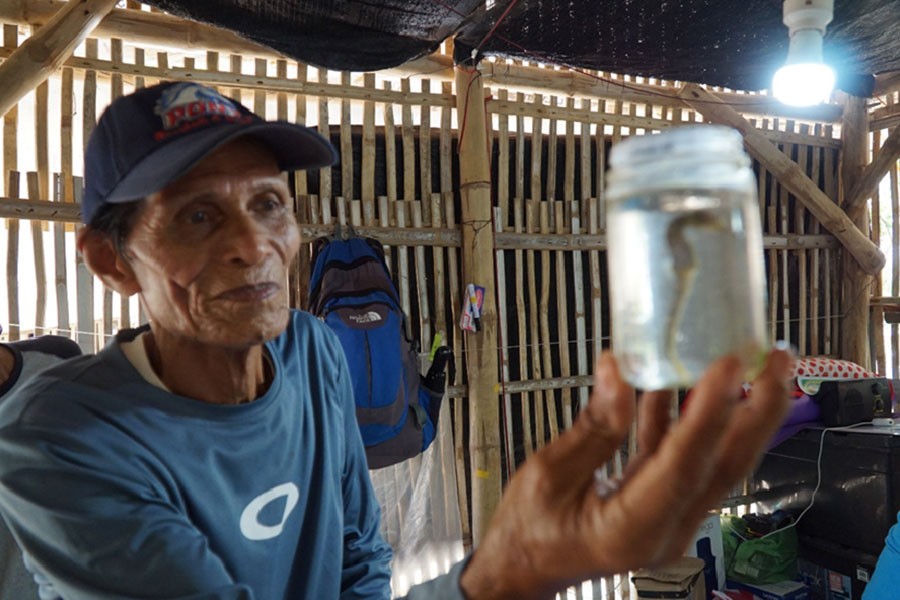
For the future
Today, about 60 community members are participating in the project. Hatcheries and facilities constructed by SEAFDEC/AQD to support sea ranching have been turned over to Sagay City and MOSRA in 2019.
Janet Tuling Jarina is Tatay Marianing’s daughter and the present secretary of MOSRA. She shared that the monthly monitoring of the abalone and sea cucumber stocks continue in daily schedules and shifts among the members in the wake of the COVID-19 pandemic.
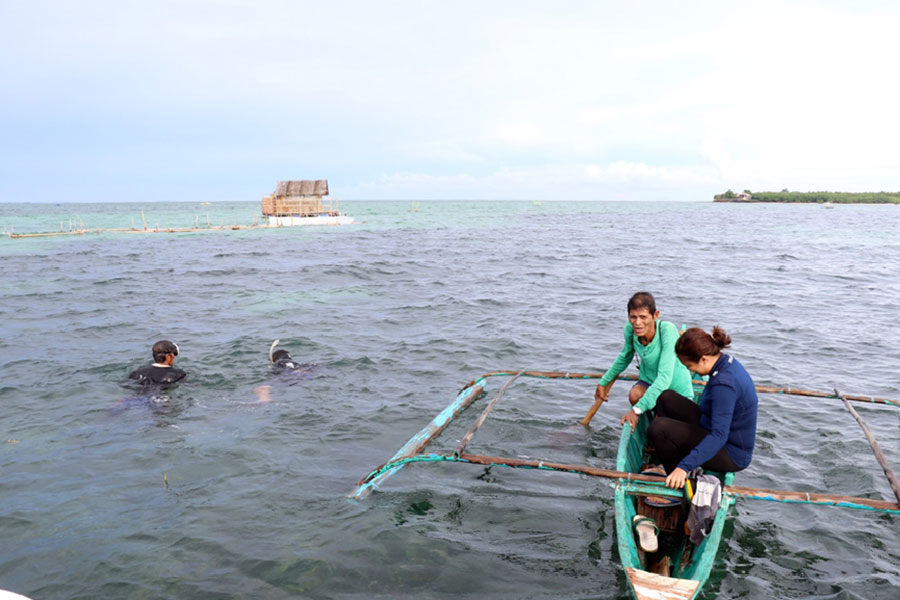
“Papa always emphasized that this project is for the future generations of our community. The benefits reaped from our efforts today will be appreciated by our kids and even grandkids,” said Jarina, who is also a mother of a four-year-old boy.











